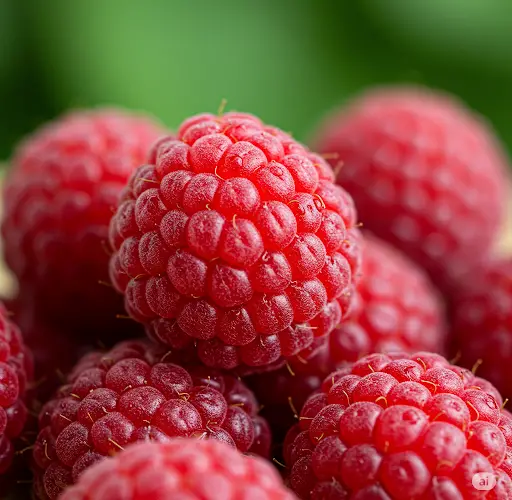Raspberries are a popular and rewarding fruit to grow, offering delicious berries packed with vitamins and antioxidants. To enjoy a larger and healthier raspberry harvest, proper pruning is essential. Spring pruning, in particular, can dramatically increase fruit yield, improve air circulation, and keep your plants vigorous year after year.
This article explains an effective spring pruning method designed to boost your raspberry harvest, whether you grow summer-bearing, everbearing, or fall-bearing varieties.
Why Prune Raspberries in Spring?
Raspberry plants produce fruit on two-year-old canes called floricanes. The first year, primocanes grow vigorously but do not bear fruit. The following year, these canes become floricanes and produce berries before dying back.
Spring pruning focuses on removing old, unproductive canes and encouraging the healthy growth of new canes for the upcoming season. Without pruning, raspberry bushes become overcrowded, leading to poor fruit production, disease, and smaller berries.
By pruning in early spring, you give your raspberries a fresh start, increase sunlight exposure, and improve airflow—key factors for a bountiful harvest.
Step 1: Identify the Type of Raspberry You Have
Before pruning, it’s important to know whether you have summer-bearing or everbearing raspberries:
-
Summer-bearing raspberries produce one large crop on floricanes during early to mid-summer.
-
Everbearing (fall-bearing) raspberries produce two crops: a smaller summer crop on floricanes and a larger fall crop on primocanes.
Pruning techniques differ slightly between these types to maximize yield.
Step 2: Prepare Your Tools
Use clean, sharp pruning shears or garden scissors to make precise cuts that heal quickly. Disinfect your tools with rubbing alcohol or a bleach solution to prevent spreading disease.
Step 3: Remove Dead and Diseased Canes
Start by cutting out any canes that are dead, diseased, or damaged.
-
Dead canes appear dry, brittle, and often grayish or brown.
-
Diseased canes may show discoloration, lesions, or fungal growth.
-
Remove these canes at ground level to reduce the risk of disease spreading to healthy plants.
Clearing out unhealthy canes opens up space for new growth and helps keep your raspberry patch disease-free.
Step 4: Thin Out Crowded Canes
Healthy raspberry bushes need space for canes to grow strong and produce large berries. Thin out crowded canes to improve air circulation and sunlight exposure.
-
Aim to keep about 4 to 6 of the healthiest canes per linear foot of row.
-
Remove the weakest, thinnest, or oldest canes by cutting them at ground level.
-
Focus on retaining canes that are around pencil thickness and show no signs of damage.
Thinning improves fruit quality by reducing competition among canes and minimizing fungal problems caused by moisture buildup.
Step 5: Shorten the Remaining Canes
After thinning, prune the remaining primocanes to encourage branching and increase fruiting sites.
-
For summer-bearing raspberries, cut back the top 4 to 6 inches of each cane to stimulate lateral branch growth.
-
For everbearing raspberries, if you want to harvest two crops, prune after the summer harvest. To focus on a single, larger fall crop, prune all canes to ground level in early spring.
Shortening canes results in more lateral shoots that will develop flowers and fruit, boosting your overall harvest.
Step 6: Remove Low Growth and Suckers
Clear away any low-lying shoots or suckers that emerge more than 6 inches away from the main row. These can sap nutrients and crowd the bed.
Maintaining clean rows helps with weeding, watering, and general care, and it keeps plants healthy.
Step 7: Maintain Soil and Mulch
After pruning, apply a layer of organic mulch such as straw, shredded leaves, or bark around the base of your raspberry plants.
-
Mulching helps conserve moisture, suppress weeds, and moderate soil temperature.
-
Avoid piling mulch against the canes to prevent rot.
In addition, feed your raspberries with a balanced fertilizer or compost in early spring to support vigorous cane and fruit development.
Step 8: Water and Monitor
Raspberries need consistent moisture, especially during fruit development. Water deeply once or twice a week, depending on rainfall.
Regularly check your raspberry patch for signs of pests or disease and manage them promptly.
Bonus Tips for Raspberry Pruning Success
-
Prune on a dry day to reduce the chance of fungal infection.
-
Dispose of removed canes by burning or composting away from the raspberry bed.
-
Train canes onto trellises or supports to keep them upright and increase air circulation.
-
Avoid pruning too late in spring to prevent removing new buds.
Conclusion
Spring pruning is one of the most important steps to maximize your raspberry harvest. By removing dead and diseased canes, thinning overcrowded growth, shortening remaining canes, and maintaining healthy soil, you encourage your plants to produce more abundant and higher-quality berries.
Whether you grow summer-bearing or everbearing raspberries, this pruning method prepares your plants for a vigorous growing season and a bountiful crop. Taking the time to prune correctly in spring will reward you with sweet, juicy raspberries to enjoy throughout the season.



